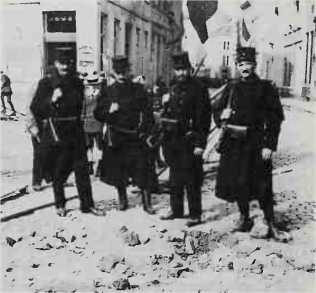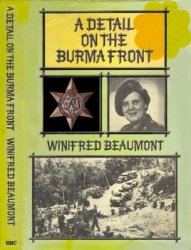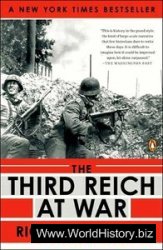Beaumont Hamel. Fortified village, northwest of the River Ancre, on the Somme battlefield. The British 29th Division — which included the 1st Battalion, Newfoundland Regiment - suffered 5,240 casualties in its vain attempt to take the village on July 1 1916. Beaumont Hamel finally fell to the 51st Division on November 13 1916.
Beaverbrook, Lord (Max Aitken) (1879-1964). Canadian. Press baron. Served in Lloyd George’s government in World War I and Churchill’s in World War II. As Minister of Aircraft Production in 1940, he reorganized and expanded the industry dramatically but with the result that fighters were over-, and other types underproduced.
Beck, Gen Ludwig see july plot.
Beda Fomm, Battle of (February 5-7 1941). After the capture of Tobruk, Gen O’Connor, commanding the Western Desert Force, saw an opportunity to cut off the withdrawal of the Tenth Italian Army (Tellera) from Cyrenaica by launching a surprise and logistically hazardous thrust across the desert via Mechili to the coast road near Beda Fomm, 60 miles (96km) south of Benghazi. On February 5 a small mixed force of armoured cars, artillery, and infantry under the command of Lt Col J F Combe of the 11th Hussars, cut the coast road and managed to hold it until the arrival of 4th Armoured Brigade and the Support Group of 7th Armoured Division. After repeated attempts to break through failed, the remnants of Tenth Army surrendered on February 7. Gen Tellera was mortally wounded, and all his staff and 25,000 men were taken prisoner. WGFJ.
Beetham, Marshal of the RAF Sir Michael (b. l923). Br. Chief of Air Staff in 1982, he had some misgivings about sending the Task Force to the Falklands with only the limited air cover provided by the Harriers embarked in the carriers Invincible and Hermes. However, he accepted that this was essentially a maritime operation and gave Adm Woodward all the help the RAF could provide, chiefly in the form of strategic air transport to Ascension Island, maritime reconnaissance and a squadron of RAF Harriers. The bombing attacks on Port Stanley airfield by single Vulcan bombers (Operation “Black Buck”), although rightly hailed as extraordinary feats of airmanship, were not effective in denying it to the Argentine Air Force. MH.
Belfast. British cruiser; launched 1938; 13,175 tons full load; 12 x 6in guns (triple mounts), 12 x 4in guns (twin mounts) 6 x 21in torpedo tubes. Virtually rebuilt after striking magnetic mine. Firth of Forth, November 1939, rejoining fleet in November 1942. Served in Russian convoys; Battle of North Cape; Normandy bombardment, 1944. Joined Far Eastern Fleet, mid-1945; flagship at time of Amethyst incident, 1949. Shore bombardments during Korean War; in reserve 1963. Now preserved in Pool of London.

Defenders of “brave Belgium”, 1914
Belgium, invasion of (1914). The German invasion of Belgium — the immediate cause of Britain’s entry into World War I - began on August 4 1914. In accordance with the Schlieffen plan, as modified by von Moltke, six brigades from the German Second Army were detailed to capture the Liege forts, which commanded the Meuse gateway into the Belgian plain. This was accomplished, with the help of powerful 30.5 and 42cm howitzers, by August 16, enabling the German right-wing armies to spread out into Belgium more or less on schedule. To adhere to their timetable, and also to avoid having to leave large forces to guard their rear, the Germans deliberately pursued a policy of “Schrecklich-keit” (“Frightfulness”), trying to cow the population into obedience by means of the execution of civilians and the destruction of property. The Belgians too carried out demolitions in an effort to slow the German advance, but on August 18 the main part of the Belgian Army, having waited in vain behind the Gette for the British and French, withdrew to the fortress of Antwerp. On August 20 the Germans entered Brussels and, the next day, invested Namur, the final fortress obstacle on the Meuse route into France. The city of Namur fell on August 24, the last of its forts capitulating soon afterwards, while Louvain was burned in reprisal for alleged civilian resistance. However, the need to detach units to cover Antwerp and other forts weakened the German right wing, with the heaviest fighting still ahead. British reinforcements, landed at Ostend and Zeebrugge, delayed, but could not prevent the fall of Antwerp on October 10 and the Belgian Army withdrew again, this time to the Nieuport-Dixmude line along the River Yser. Here, in late October, the Belgians stopped an attempted German breakthrough to the Channel ports, compelling the Germans to concentrate their attacks inland, at Ypres, between October 31 and November 11 1914. Following the successful, if costly, defence of Ypres by the British Expeditionary Force, the opposing armies settled into trench lines from the North Sea to the Swiss frontier, leaving only a narrow strip of Belgian territory still free from German occupation. PJS.
Belgium, invasion of (1940) see
LOW COUNTRIES, INVASION OF.
Ben Bella, Mohammed Ahmed
(b. l916). Algerian political activist and anti-colonialist. Founder of FLN. Captured by French, 1956, and interned in metropolitan France. Released by de Gaulle, 1962 prior to cease-fire negotiations. First President of Algeria,
1963. Overthrown by Col Boume-dienne (1965) and under arrest until Boumedienne’s death (1978) when he was released. See also
ALGERIAN CAMPAIGN (l954-62) and ALGERIAN-MOROCCAN WAR (1963-64).
Benghazi see western desert campaign (1940—43).




 World History
World History









